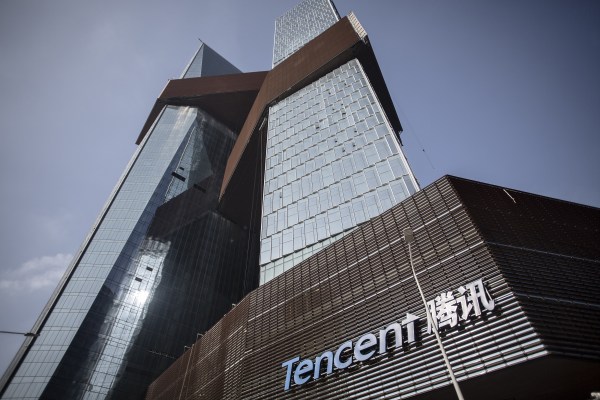Tencent may be more than a decade old but the Chinese internet giant continues to grow at pace after it posted its most significant jump in annual revenue for four years.
The firm, best known for China’s dominant messaging app WeChat, announced total revenue of RMB 151.9 billion ($21.9 billion) for its fiscal 2016. That’s up 48 percent year, its biggest leap since 2012, when overall sales rose by 54 percent to reach RMB 43.9 billion — which translated to approximately $7 billion at the time.
Tencent also grew its annual sales impressively. Net profit for the year increased by 43 percent to reach RMB 41 billion, or $5.9 billion. That’s a big jump on its 2012 figure, which, for the sake of a consistent comparison, came in at RMB 12.7 billion — roughly $2 billion at the time.
The company’s final quarter of its year saw revenue climb 44 percent with net profit coming in at RMB 10.6 billion ($1.5 billion). That’s pretty much on par with the previous quarter of business.
Beyond the incredible popularity of WeChat — which Tencent said has now reached 889 million monthly users worldwide — the company is seeing success in gaming and payments.
Tencent has always had a strong gaming footprint from its early years in PC titles, and now it is making waves in mobile. Aside from buying a majority share in billion dollar game maker Supercell and investments in other studios, it makes its own games and partners with publishers to distribute titles in China and the rest of the world. App Annie recently ranked it as the top mobile publisher of 2016 based on revenue (Supercell placed second) and Tencent said smartphone games pulled in RMB 10.7 billion ($1.55 billion) in revenue during the last quarter alone. It said that one title — Honour of Kings — reached 50 million daily users to become its most popular game to date. Overall, its online games business saw RMB 18.5 billion in revenue showing that it still has a major presence beyond mobile.
The company is leveraging WeChat to develop an increasingly popular payments system in China. Weixin pay, the payment option baked into WeChat (known as Weixin in China), reached 600 million monthly users. While it isn’t clear exactly how much money was distributed across the service, Tencent said that it hit a peak of 760,000 red packets per second during the recent Chinese New Year period. No wonder, then, that Alibaba is trying to make its Alipay service, China’s dominant digital payment system, more social to fend off the Tencent-WeChat challenge.
Tencent has also spent the last year building out its advertising chops within WeChat. The service already allows brands to connect with users directly, while e-commerce, taxis on-demand and other verticals are baked directly into it, but it began to add ads to the app’s social network-like feed in January 2015. Now it is prioritizing video ads, fine-tuning its reach in its new app, and offering products to take it beyond big advertisers and cater for the longer tail of ad and marketing customers.
All told, the company said Weixin helped drive RMB 5.2 billion from performance advertising in the most recent quarter. That accounted for the lion’s share of the RMB 8.3 billion booked in online advertising sales.
The internet giant’s most recent innovation is mini programs, app-like programs for WeChat that users can download to their phone without requiring an app store.
While initial progress hasn’t been too encouraging as some publishers have struggled to find a meaningful usecase and fit, Tencent said today it believes mini programs can “help us broaden and deepen our services offering in low-frequency use cases, connect more offline services to online users, and provide more venues for users to sample functionalities offered by apps and thus increase the conversion rate for app downloads.”
In other words, this could be an entirely new paradigm for the company to reach and interact with users — and one that bypasses mobile’s key gatekeepers, Apple, Google and China’s third-party Android app store owners.
